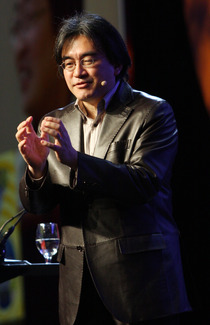The Nintendo CEO talks about the beginnings of the 3D-enhanced handheld.
In an interview with VentureBeat, Nintendo President Satoru Iwata talked about how the 3DS came to be. The interview traced the creation of the 3DS to the days of the Virtual Boy, an experiment Satoru Iwata claims "didn"t work that well".

The interview discussed the following:
- The idea for a 3D gaming experience started ten years ago with the release of the Nintendo GameCube. At the time, 3D existed in the form of the parallax barrier. Nintendo experimented with the technology using LCD screens and the GameCube. The first game that used the technology was Luigi’s Mansion, with the results being very appealing, according to Iwata.
- The problem with this was that at the time LCD screens were expensive, and Nintendo realized that the console would already be a pricey purchase for the consumer.
- 3D gaming was also experimented with on the GameBoy Advance, with the 3D working via an adapter (Iwata claims to have the original prototype in his drawer). The final results were that the GameBoy Advance wasn’t powerful enough to warrant the technology.
- When designing the DS, the idea of 3D wasn’t brought back due to failed experiments.
- The basis of the 3DS started with re-designing the DS, and adding more graphical power to it. The idea of 3D was suggested once more, but was denied. Later on, the idea was accepted into the design. The opinion of the developers changed as soon as they saw the quality of the product.
- The success of James Cameron’s Avatar inspired Nintendo to begin work on the 3DS.
- The interviewer asked about the concerns players have about the 3DS’ “sweet spot”. To this, Iwata explained that the screen won’t see any changes. The team tested the sweet spot’s size and believed that it is acceptable at any angle.
- When asked about cost, Iwata refrained about talking about the 3DS’s final cost. However, he explained that the production costs were higher than those of the DS and hoped to not sell the system below its production cost.
- The interview ends with the interviewer asking Iwata if there will be 3D TVs that require no glasses. While Iwata believes that someone will eventually invent a glasses-free 3D TV, he has no idea when that will happen.
